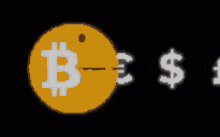Blockchain 3.0
Blockchain 3.0 represents an advanced phase of blockchain technology, focusing on:
-
Scalability: High transaction throughput with technologies like DAG (Directed Acyclic Graph) for near-instant transaction confirmations.
-
Interoperability: Enhanced ability for different blockchains to interact, exemplified by projects like Cosmos and Chainlink.
-
Sustainability: Moving from energy-intensive Proof of Work to more eco-friendly consensus mechanisms like Proof of Stake (PoS).
-
Cost-Efficiency: Reducing transaction fees and operational costs, making blockchain viable for more use cases.
-
Security: Improved security protocols to prevent attacks like the 51% attack, enhancing trust in the system.
-
User Experience: Improving the accessibility and usability of blockchain technologies for mainstream adoption.
-
Broader Applications: Extending beyond finance into healthcare, supply chain, identity management, and more, with solutions tailored to specific industry needs.
Blockchain 3.0 aims to resolve the limitations of its predecessors, making blockchain technology more practical, scalable, and integrated into various sectors, thereby fostering wider acceptance and usage.
here are some specific examples of Blockchain 3.0 projects and applications:
-
Cardano (ADA): Focuses on scalability, security, and sustainability with its Ouroboros proof-of-stake protocol, aiming to provide a platform for financial applications and smart contracts.
-
Polkadot (DOT): Designed for interoperability, allowing various blockchains to transfer messages and value in a trust-free environment, fostering a web of connected chains.
-
Chainlink (LINK): While not a blockchain itself, Chainlink provides decentralized oracle networks that bring real-world data onto blockchain, crucial for smart contracts needing external inputs.
-
IOTA: Uses a DAG called the Tangle instead of a traditional blockchain, enabling feeless and instant transactions, particularly suited for IoT devices and machine-to-machine micropayments.
-
Zilliqa (ZIL): Employs sharding to increase transaction speed, aiming to solve blockchain scalability by dividing the network into smaller groups (shards) for parallel processing.
-
Aion (AION): Focuses on solving the interoperability problem with a multi-tier blockchain system, allowing for the transfer of information and assets between different blockchains.
-
VeChain (VET): Applied in supply chain management, VeChain uses blockchain to enhance transparency and traceability in product lifecycle management.
-
Helium (HNT): Creates a decentralized wireless network where users can set up hotspots to expand coverage and earn cryptocurrency, showcasing blockchain’s application in network infrastructure.
-
Stellar (XLM): Aimed at facilitating cross-border payments with low fees and quick settlement times, Stellar is an example of blockchain applied to global finance.
-
HiveMapper: A decentralized mapping service where drivers contribute data to map the world, demonstrating blockchain’s utility in geospatial applications.
-
MediLedger: Utilizes blockchain for pharmaceutical supply chain transparency, ensuring drug authenticity from manufacturer to consumer.
-
MyClinic: A blockchain-based platform for secure health data sharing between patients and healthcare providers, enhancing privacy and data integrity.
These examples illustrate how Blockchain 3.0 is not just about improving the technology but also about expanding its practical applications across different industries, focusing on real-world integration, scalability, and user-centric solutions.




